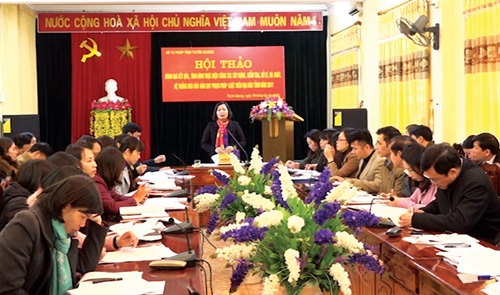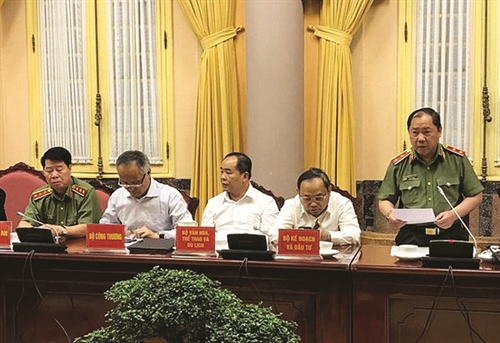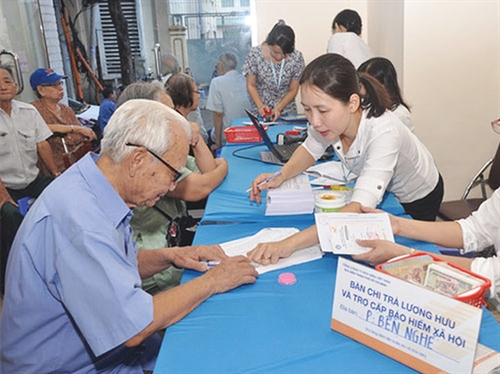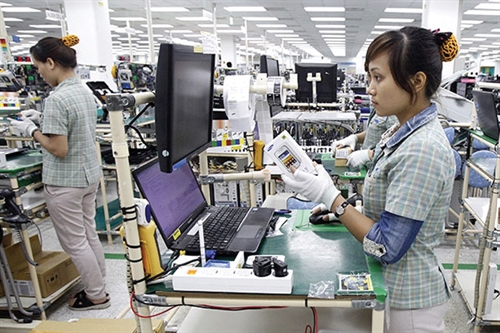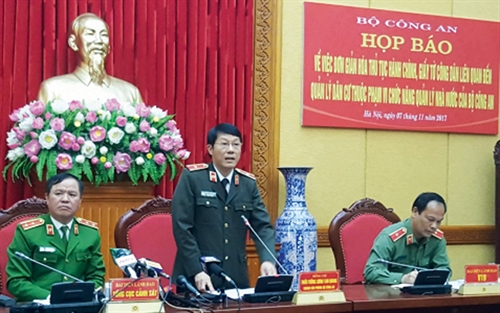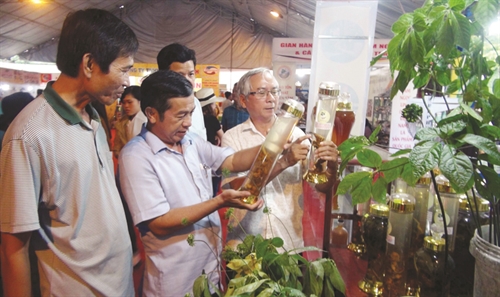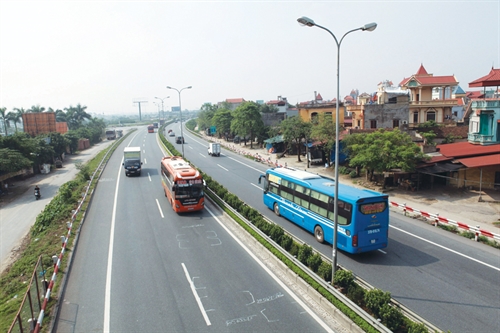From mid-October, traders and residents in Vietnam-China border areas may use Chinese yuan in certain transactions, according to a regulation issued by the State Bank of Vietnam last month.
The central bank, in its press release about the issuance of Circular 19, underlines that the new regulation is aimed at creating a legal basis for Vietnamese and Chinese traders to use their respective national currencies in the exchange of goods and services, thus boosting border trade between the two countries.
According to the state bank, this is not the first time a payment mechanism for border trade activities between Vietnam and a bordering country has been established. Until now, the country and its neighbors, including Laos, Cambodia and China, have inked a series of border trade agreements and payment agreements, allowing parties to border trade transactions to make payment in their national currencies.
The first border trade agreement between Vietnam and China, titled the Agreement on Sale and Purchase of Goods in Border Areas, was signed in October 1998. Accordingly, payment for goods sold and purchased in Vietnam-China border areas may be made in freely convertible foreign currencies, Vietnam dong or Chinese yuan. To guide the implementation of the Agreement, in 2004, the State Bank of Vietnam issued Decision 689 specifying payment in the trading and exchange of goods and services in Vietnam-China border areas and border-gate economic zones. Over more than a decade of implementation, Decision 689, on the one hand, has helped boost trade between the two countries but, on the other hand, also revealed several shortcomings that need to be remedied.
Against the backdrop of increasing economic and trade cooperation between Vietnam and China, the two countries entered into a new border trade agreement in 2016. On January 23, 2018, the Government issued Decree 14 on border trade activities, stipulating in detail different forms of border trade, including trading and exchange of goods by traders; trading and exchange of goods by border residents; and trading and exchange of goods at border markets.
Designed to guide the implementation of Decree 14, Circular 19 specifies the foreign exchange management in border trade between Vietnam and China, entrusted payment in Chinese yuan, and use of Chinese-yuan payment accounts at bank branches opened in border areas, among others.
The Circular makes clear that besides Vietnam dong, traders and border residents may also use Chinese yuan and freely convertible foreign currencies such as the US dollar, Euro or Japanese yen, to pay for goods and services sold or exchanged across the border. Payments can be made in cash, via banks or by other non-cash payment methods.
The scope of application of the Circular covers seven Vietnamese provinces bordering China, including Cao Bang, Dien Bien, Lai Chau, Lang Son, Lao Cai, Ha Giang and Quang Ninh.
However, the provisions of the Circular on the use of Chinese yuan in Vietnam’s border areas immediately stirred up anxiety among the public. In an interview with the local newswire Vietnamnet, senior economist Pham Chi Lan admitted that at first, she was startled when hearing about the new regulation, but “felt secure later after reading the Circular carefully.”
So what is the matter of concern and why it is actually not worthy of anxiety?
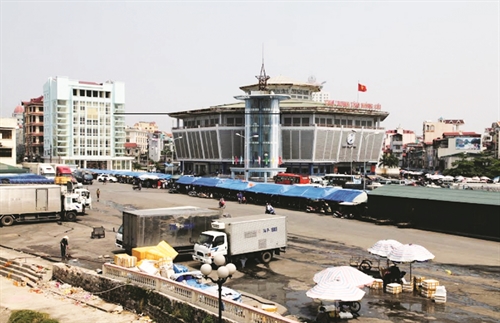 |
| A corner of Mong Cai border market in Quang Ninh province__Photo: Internet |
Limited use of Chinese yuan in border areas
It is worth mentioning that the new regulation is issued in furtherance of the 2016 Vietnam-China Border Trade Agreement. It is, therefore, designed to facilitate Vietnam-China border trade activities by allowing the use of both Vietnam dong and Chinese yuan. Hence, the question here is whether the grant of permission for official use of foreign currencies within Vietnam’s territory is in breach of the Constitution’s provision that the national monetary unit is Vietnam dong?
The answer, according to lawyer Truong Thanh Duc, president of Basico law firm, is no.
“Both the Law on Credit Institutions and the Ordinance on Foreign Exchange Management affirm that Vietnam dong is the only currency allowed for circulation in Vietnam’s territory. This is also the spirit of the Constitution. Foreign currencies may be used as means of payment in civil transactions but must be made via credit institutions licensed to conduct foreign exchange transactions and subject to supervision and control of competent state agencies,” Duc told the Lao Dong (Labor) newspaper.
Under Circular 19, the use of Chinese yuan and other foreign currencies in border markets and border areas are permitted but subject to strict conditions regarding the type of transaction and mode of payment.
The regulation clearly stipulates that cash payments for goods and services sold or provided at Vietnam’s border markets and border areas must be made in Vietnam dong. Vietnamese traders are allowed to receive cash payments in Chinese yuan for goods and services sold or provided across the border under export contracts but they have to remit the Chinese-yuan cash amount into a commercial bank within seven working days after receiving such amount from their partners. So, the use of Chinese yuan, even in case of cash payment, will be closely controlled.
“Circular 19 is by no means unconstitutional,” Duc affirmed.
Economist Pham Chi Lan agreed with the lawyer’s opinion. “Circular 19 adheres to fundamental principles of the Law on Credit Institutions and the Ordinance on Foreign Exchange Management,” she said.
According to Lan, the 2017 Law on Foreign Trade Management and Decree 14 on border trade activities have adopted clear and precise definitions of border trade activities, traders and residents engaged in border trade activities, and places regarded as border markets and border areas. These two documents, together with relevant regulations such as the Law on National Border and the Law on Civil Status, will restrict the application of Circular 19 while providing state agencies with legal tools for closely supervising its implementation.
“So, the number of monetary transactions under as well as scope of influence of Circular 19 will not be as large as many might concern,” Lan said.
However, Lan remained anxious about the enforcement of the new regulation in reality.
“I’m worried that if responsible persons fail to fully and seriously perform their tasks, the new regulation might be abused by evildoers in both sides of the border to cause harms to the national economy,” she said.
“The State should create more channels for people in border provinces as well as other localities to supervise and timely report any adverse circumstances,” Lan suggested.
Lawyer Duc, for his part, seemed less nervous than Lan about this issue.
“The use of Chinese yuan as well as other foreign currencies outside border areas is illegal and violators will face a huge fine and at the same time have the whole money amounts involved in the violation confiscated,” Duc said.
Specifically, the fine for use of Chinese-yuan cash to pay for goods and services in contravention of regulations will mount to VND 200-250 million, for individual violators, and VND 400-500 million, for institutional violators. Those who illegally transport across the border a cash amount of VND 5 million or a Chinese-yuan amount of equivalent value may be fined up to VND 100 million, for individual violators, and VND 200 million, for institutional violators. In case the cash amount is valued at VND 100 million or higher, violators may be examined for criminal liability under Article 189 of the 2015 Penal Code with the highest penalty of up to 10 years of imprisonment.- (VLLF)
